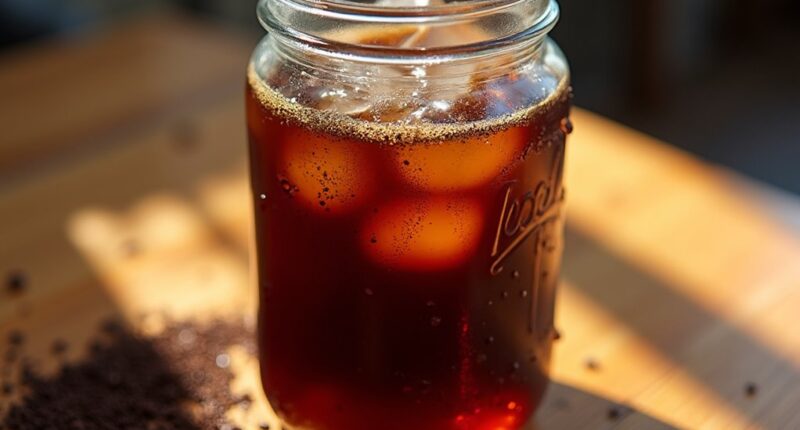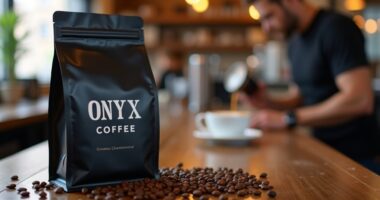If you leave cold brew too long, you’re in for a not-so-fun surprise! It can turn bitter, tasting flat and stale—definitely not the invigorating sip you crave. Plus, it could lose its smoothness and punch, leaving you with a questionable brew. And let’s be real, that lingering sour smell is a huge red flag! So, keep track of those steeping times, and you’ll avoid an epic cold brew fail. Stick around to learn all about perfecting your brew!
At a Glance
- Steeping cold brew for over 24 hours can lead to a bitter and unbalanced flavor profile.
- Extended steeping alters the chemical composition, increasing caffeine but reducing smoothness and sweetness.
- Over-extraction diminishes aroma, resulting in a stale and less enjoyable cold brew experience.
- Leaving cold brew at room temperature for too long promotes microbial growth, posing safety risks.
- Cold brew should be refrigerated to prevent spoilage; discard it if it smells sour or appears cloudy.
Ideal Brewing Time for Cold Brew
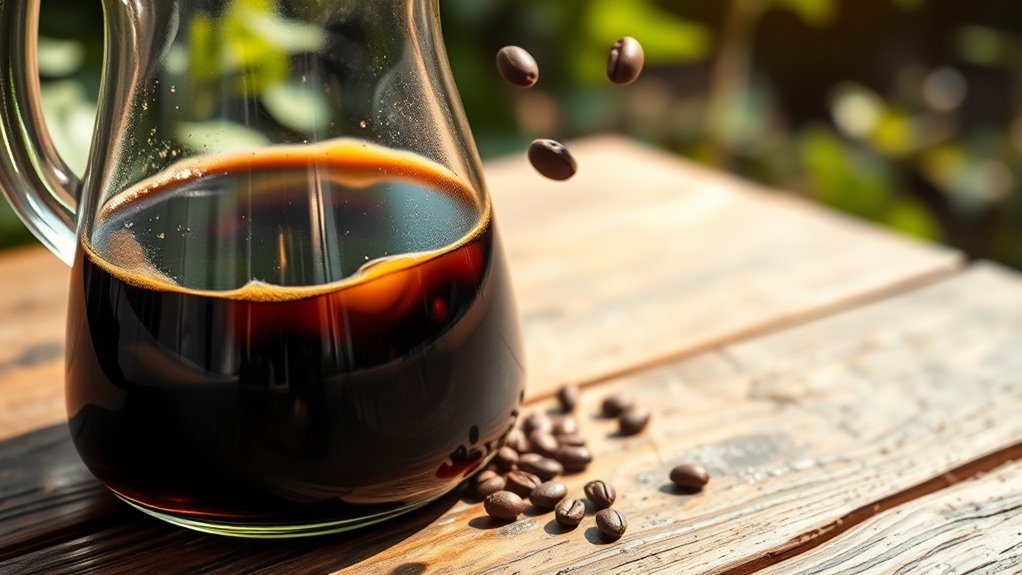
When it comes to brewing cold brew coffee, you might wonder just how long you should let it steep. Most experts say 14 to 18 hours is the sweet spot, balancing flavor and clarity.
If you steep for just 10 to 12 hours, you might end up with a weak cup—definitely not what you want!
And don’t fall for those brewing myths about steeping over 24 hours; it just leads to sad, degraded flavor. Using the right cold brew coffee machine can enhance your brewing experience and improve the final taste.
Effects of Over-Extraction
If you let your cold brew steep for too long, you might end up with a cup that tastes more like a bitter potion than an invigorating drink!
Over-extraction causes an unpleasant flavor imbalance, ruining that smooth, balanced taste we love. Here’s what happens:
Over-extraction leads to a bitter brew, disrupting the smooth balance we crave in our coffee experience.
- You’ll notice bitterness overpowering sweetness.
- The delightful aroma fades away.
- Your brew might end up tasting stale.
- Caffeine levels spike, but it’s not the good kind.
- You risk brewing a cup that’s unsafe to drink!
- Choosing the right coffee roast for cold brew can help prevent these issues.
Chemical Changes During Extended Steeping
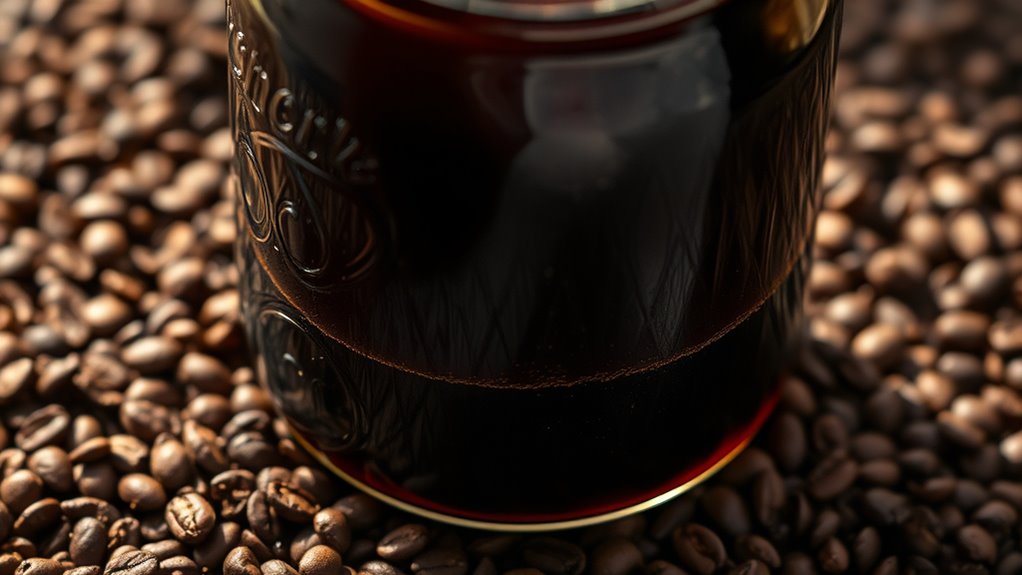
Over-extraction can really mess with your cold brew game, but it’s not just the flavor that takes a hit.
When you steep too long, the chemical composition changes, and your extraction efficiency dives. Sure, you get more caffeine, but you might lose that smooth, fruity vibe you love.
Cold brew captures fewer acidic compounds, so if you push it past 24 hours, you’re just asking for bitter notes to crash the party. Additionally, opting for low acid coffee can help maintain that desirable flavor profile while minimizing unwanted bitterness.
It’s like waiting too long for that perfect movie scene—sometimes, less is more!
Microbial and Safety Concerns
While you might be tempted to let your cold brew sit out for a while, trust me, that’s a risky move! Leaving it at room temperature opens the door to microbial growth, and nobody wants that kind of surprise in their cup.
Here’s what you need to know:
- Bacteria like E. coli can develop in just 24 hours.
- Cold brew’s a safety risk after 2 hours unrefrigerated.
- Refrigerate it to keep those pesky microbes at bay.
- Higher temps speed up spoilage.
- Discard if it smells sour or looks cloudy.
- Regular cleaning of your coffee maker with vinegar cleaning tips can also help prevent contamination.
Stay safe, and enjoy your brew without the worries!
Flavor Profile Degradation Over Time
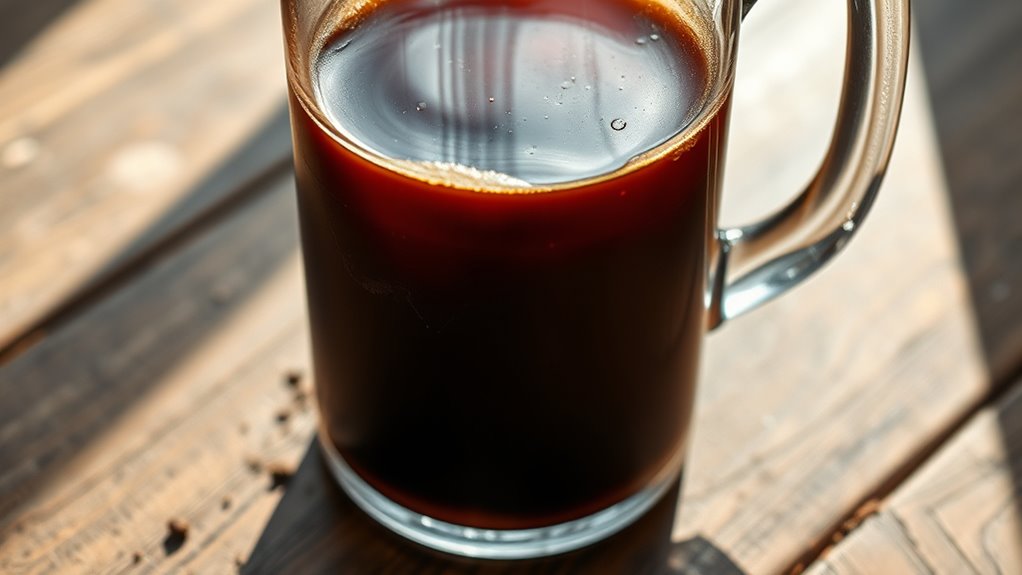
Leaving your cold brew sitting around for too long can really mess with its flavor, and nobody wants a cup of disappointment!
As time ticks on, you’ll notice some serious flavor evolution. That sweet, smooth vibe? It dulls, while bitterness starts to crash the party. Aroma degradation kicks in, too—those lovely scents fade away quicker than you can say “coffee break.”
Plus, if your brew’s been soaking up sunlight, you might end up with a skunky taste. So, keep it dark and cool! Proper coffee storage is key to maintaining freshness. Trust me, your taste buds will thank you, and you’ll avoid that sad, stale cup.
Physical and Chemical Stability During Storage
When it comes to storing your cold brew, you really want to keep an eye on the physical and chemical stability—it’s like a little science experiment in your fridge!
Storing cold brew requires careful attention to its stability—think of it as a fun science experiment right in your fridge!
If you don’t, you might end up with a cup of coffee that tastes like regret. Here’s what to remember:
- Store at lower temperatures to maintain flavor.
- Use airtight containers to prevent oxidation.
- Keep it in a dark place to avoid light damage.
- Minimize headspace to limit air exposure.
- Watch for cloudiness or separation, it’s a sign of trouble!
Additionally, the quality of your cold brew can be influenced by the rich flavors of ground coffee, so using high-quality beans is essential for the best taste!
Your cold brew deserves the best care, so don’t let it go to waste!
Recommendations for Brewing Duration
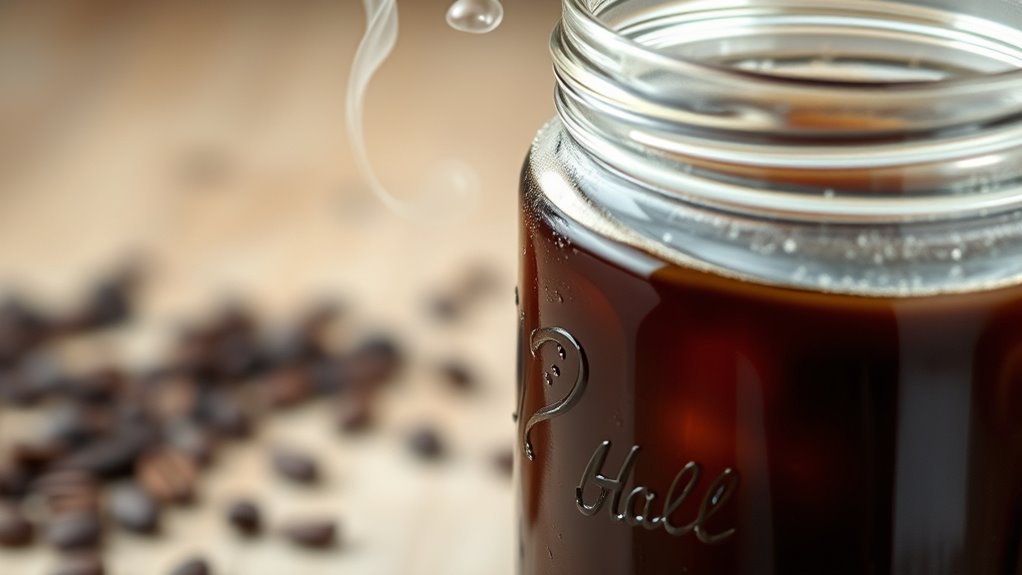
If you want to brew the perfect cold brew, you’ve got to get the timing just right! Aim for a steeping time of 10 to 14 hours for that smooth, balanced flavor we all crave.
If you go shorter, your brew might taste weak—yikes! And too long? Hello, bitterness!
Remember, your grind size and water temp are steeping variables that can change everything. A coarser grind lets you experiment with longer brew times. Additionally, using the right coffee-to-water ratio is crucial for achieving that desired flavor profile.
So, start with 12 hours in the fridge and adjust based on what your taste buds tell you.
Happy brewing, and may your cold brew bring joy to your mornings!
The Importance of Coffee-to-Water Ratio
Getting the coffee-to-water ratio just right is like finding the perfect dance partner—too much or too little can throw everything off balance!
You’ll want to reflect on your brewing goals when making a ratio adjustment. Here are some tips to help you nail that ratio:
- Aim for 1:6 to 1:9 for a strong concentrate.
- Use 1:12 to 1:18 for a ready-to-drink option.
- Balance strength and flavor for a better brew.
- Remember that lighter ratios can cause sourness.
- Experiment to find your ideal taste profile.
- The ideal brewing temperature for pour over coffee can also enhance the extraction process, influencing the overall flavor of your brew.
Best Practices for Storing Cold Brew
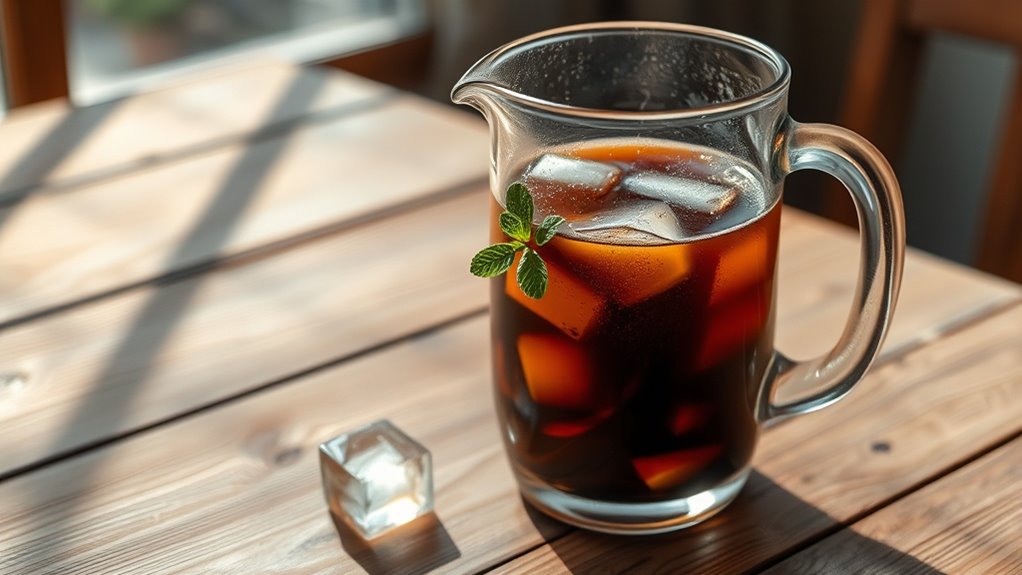
Storing cold brew is like giving your favorite drink the VIP treatment it deserves!
First off, grab a glass container—swing-top bottles are super cool and keep things fresh. Make sure it’s airtight, so no sneaky air spoils your brew.
Grab a glass container—swing-top bottles are trendy and keep your cold brew fresh and flavorful!
Keep it in the back of your fridge, where it’s chill at 34°F to 40°F. And hey, fill it close to the top to reduce oxidation.
Don’t forget to label it with the brew date; you don’t want to sip something funky! Also, using a container with airtight seals can greatly enhance the preservation of your cold brew’s flavor.
With these tips, your cold brew will stay delicious, and you’ll be the cold brew hero among your friends!
